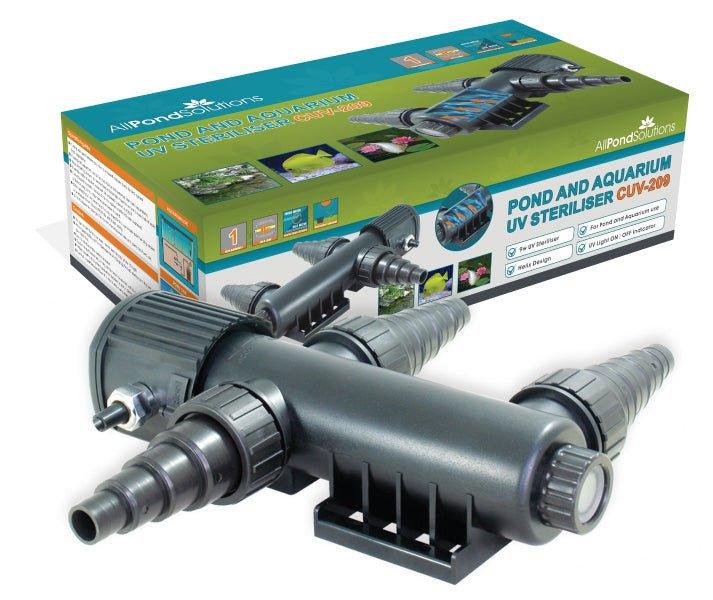Winter Pond Keeping Guide
It’s that time of year again – winter is coming. As temperatures start to drop, you need to be proactive about making sure your fish pond is prepared to withstand the cold. There’s no need to panic; if you take action now, you can protect your pond from the harsh weather. Here are our top tips for getting your pond ready for winter.
Clean with a Pond Vacuum
If you gave your pond a thorough spring cleaning, you’re in good shape the onset of winter. However, there’s one area of your pond you should focus on: the bottom. Cleaning the bottom of your pond will remove the sediment that accumulated over spring and summer and prevents too much other organic matter (e.g. leaves, fish waste, uneaten food, pond plants) from decaying throughout winter. Doing this now will result in a lot less muck to clean in spring!
A pond vacuum is an ideal tool for the job, as it syphons debris from hard to reach areas of your pond without the hassle of bending and scrubbing, making it much faster and easier. It also has the added benefit of only removing about 10-15% of the pond’s water, just the right amount to freshen up the pond. Vacuuming helps to keep fish healthy as it will reduce the number of harmful toxins, fungi & parasites that can grow. It also improves water clarity. As an added bonus, the nutrient-rich waste makes an effective garden fertiliser.
Clean All Pond Filters
Winter tends to be a busy time, with Christmas celebrations and escapes to warmer climes. Ponds can get neglected, especially as the cold is a real deterrent to spending time outside. With that in mind, it’s a good idea to make sure your pond filter is in tip-top shape before winter sets in. Removing filters and cleaning them, as well as replacing any worn out filter media, will make sure they keep the pond clean throughout the season.
Install a Pond Heater or Aeration System
Pond heaters are a bit of a misnomer; they don’t actually heat up the water in a pond. Rather, they melt a hole in the ice that forms over the pond, allowing harmful gases like ammonia to escape and letting in vital oxygen. Pond heaters are a great option as they don’t disturb the water. This is key, as the fish will be in a state of torpor and can be extra sensitive to any strong motion (such as hammering through the ice to create a hole). If you have tropical fish, or temperature-sensitive fish such as koi, a pond heater also helps to maintain a good overall temperature, keeping them healthy and happy.
An aeration system, such as an air pump, will also have a similar effect – the circulation of water and air helps to keep a small part of the pond ice free, allowing oxygen in and letting poisonous gases out. Ensure that you periodically check the pond during the winter to make sure the ice has not frozen over completely.
Use Fish Nets and Pond Cover Nets
Vacuuming your pond will remove the waste build-up but what about preventing the waste from entering? That’s where nets come in handy. Regular fishnets can be used to scoop up floating leaves before they have a chance to disintegrate and decay. Pond cover nets are also great tools. They come in a range of sizes and weaves to prevent all types of leaves from getting into the pond. Choose a net in a dark green colour to blend in well with the natural surroundings of your garden. Be sure to regularly clear the net of any foliage to prevent it sinking into the pond under the weight.
Switch to Wheat Germ Fish Food
Fish are poikilothermic (cold blooded), so their body temperature is regulated by their surroundings. When it gets cold outside, they get cold inside. This induces torpor – a shorter version of hibernation. Your fish’s metabolism, breathing and activity rate all slow to help them conserve energy and stay warm. They tend to sit at the bottom of the pond, as that’s where the water is warmest.
They also tend to eat less. Switching to a wheat germ diet is ideal for them at this time of year. Its lower protein content makes it easy to digest, reducing waste in the pond and helping to prevent blockage-related illnesses like swim bladder disease. You can gradually swap out some of their protein-heavy summer food for wheat germ pellets, until you’ve completely switched over. Depending on the type and number of fish, feed them a couple times a week and only as much as they can eat within five minutes. Once the temperature is below 5 degrees Celsius, stop feeding them entirely. You might think it’s cruel, but it’s best thing for them! In spring as the temperatures warm back up, their appetite will return.

